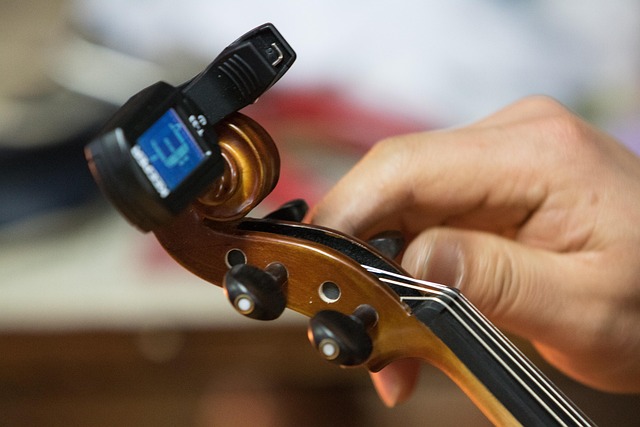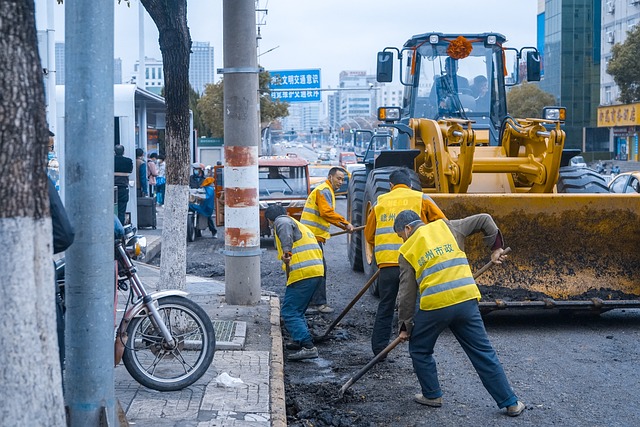Identifying and understanding thermostat wire connections (power, heat, cool, common) is vital for accurate repairs by professionals or DIYers. Prioritize safety by cutting power at circuit breakers, use proper tools, verify system compatibility, and invest in a multimeter for testing continuity and voltage. Test and calibrate thermostats during seasonal transitions for optimal temperature control, addressing common issues with basic checks or professional assistance for complex calibrations.
“Looking to tackle a common home heating conundrum? Fixing your thermostat wire connections can be a straightforward process for the DIY enthusiast or a crucial skill for the thermostat repair expert. This comprehensive guide breaks down the steps, from identifying wire types to testing and calibrating your device. Safety first! We’ll outline essential precautions before you begin. By following this step-by-step approach, you’ll soon be a thermostat wiring wizard.”
- Identifying Thermostat Wire Connections
- Safety Precautions Before Repair
- Tools Needed for Thermostat Wiring
- Step-by-Step Guide to Fix Wires
- Testing and Calibrating Your Thermostat
Identifying Thermostat Wire Connections

Identifying Thermostat Wire Connections is a crucial step in any thermostat repair. As a thermostat repair expert, understanding the various wires and their functions is key to ensuring accurate adjustments and troubleshooting. Common thermostats typically have four main wires: power, heat, cool, and common. The power wire supplies electricity to the thermostat, while the heat and cool wires control the flow of heating and cooling systems respectively. The common wire acts as a return path for the current.
For those interested in smart thermostat setup or learning programs explained, knowing these connections is vital. Even if you’re not a plumber Bromsgrove by trade, basic familiarity with thermostat wiring can help avoid common issues like incorrect settings or malfunctioning systems. Remember, proper identification and connection of these wires can make all the difference in maintaining a comfortable living space.
Safety Precautions Before Repair

Before attempting to fix any thermostat wire connections, safety should be your top priority. Always turn off the power supply at the circuit breaker or fuse box to prevent accidents and electrical shocks. This is crucial, especially when dealing with complex home systems, ensuring your safety as a thermostat repair expert.
It’s equally important to ensure proper tools and materials are used for the job, such as wire strippers, screwdrivers, and compatible wires. Verify the thermostat compatibility with your home system to avoid any complications during or after commercial thermostat installation and repair. A plumber in Bromsgrove, for instance, should have the expertise to handle both plumbing and heating systems, providing comprehensive solutions for all your home’s needs.
Tools Needed for Thermostat Wiring

When tackling thermostat wire connections, having the right tools is key. A thermostat repair expert recommends equipping yourself with a multimeter for voltage testing, pliers for safe wire manipulation, and wire strippers to access the copper wires inside. Additionally, you might need a new thermostat compatible with your HVAC system – ensuring seamless integration and optimal performance.
Understanding thermostat compatibility with your heating and cooling system is crucial. The best time to install a new thermostat is during seasonal transitions when temperature fluctuations are minimal, allowing for precise adjustments. If your existing thermostat isn’t turning on, this process becomes even more vital, as proper wiring is essential for efficient HVAC operation.
Step-by-Step Guide to Fix Wires

Fixing thermostat wire connections is a crucial skill for any thermostat repair expert, whether they specialize in residential or commercial thermostat installation and repair. Here’s a step-by-step guide to help you through this process.
1. Safety First: Before beginning, ensure power is cut off at the circuit breaker. This is essential, especially for those dealing with rental properties, as it prevents any accidents during the thermostat repair process. Once the power is off, locate the control panel and identify the wires connected to your thermostat.
2. Disconnect Wires Carefully: Using a pair of wire strippers or pliers, carefully disconnect each wire from the thermostat terminals. Start with the common (C) wire, then the heating (H) wire, and finally the cooling (CO) wire. Be gentle to avoid damaging the insulation. After disconnecting, inspect the wires for any signs of damage or corrosion. If present, clean or replace them as needed.
3. Test Connections: Before re-attaching the wires, use a multimeter to test each connection for continuity and voltage. This step is crucial for both residential and commercial thermostat installation and repair, ensuring that your adjustments are accurate and safe.
4. Reattach Wires Correctly: Once you’ve confirmed the connections are correct, securely reattach the wires to their respective terminals. Double-check that each wire is properly connected to avoid any future issues with your smart thermostat or other heating/cooling systems.
Testing and Calibrating Your Thermostat

Before making any adjustments or repairs to your thermostat, it’s crucial to test and calibrate the device for accurate temperature control. A thermostat repair expert recommends starting with a basic check-up. First, ensure that the batteries are fresh and properly seated; a dead battery can cause all sorts of issues. Next, inspect the wires for any signs of damage or loose connections. These simple steps often resolve common problems like a thermostat not responding to touch.
For more intricate calibrations, you might need to consult a professional to get precise readings. The best time to install a new thermostat is during seasonal transitions when temperature fluctuations are noticeable. This ensures an optimal opportunity to fine-tune settings for maximum energy efficiency. Remember, accurate thermostat repair and calibration can significantly impact your home’s comfort and energy savings, so don’t underestimate the importance of these steps.
When it comes to fixing thermostat wire connections, understanding the process is key. By identifying the correct wires, following safety precautions, and using the right tools, you can confidently tackle this task. The step-by-step guide provided offers a straightforward approach, ensuring your thermostat functions optimally. Remember, while these instructions are helpful, complex issues may require the expertise of a thermostat repair expert. Don’t hesitate to seek professional assistance for peace of mind and a job well done.
